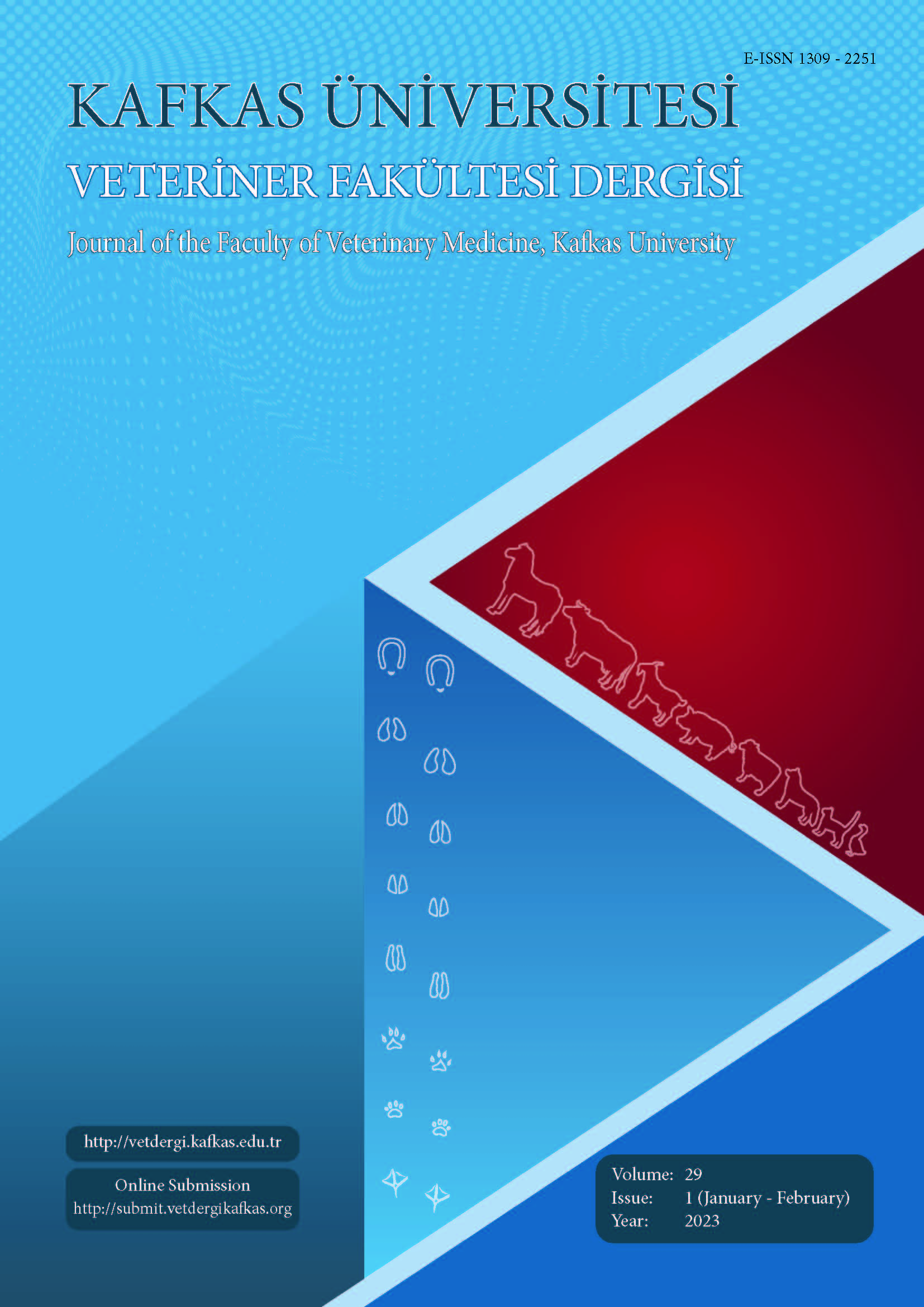
This journal is licensed under a Creative Commons Attribution-NonCommercial 4.0 International License
Kafkas Üniversitesi Veteriner Fakültesi Dergisi
2023 , Vol 29 , Issue 1
Evaluation of the Repellent Activity of 13 Achillea L. Species from Türkiye Against the Virus Vector Aedes aegypti (L.) Mosquitoes
1Ege University, Faculty of Pharmacy, Pharmaceutical Botany Department, TR-35030 Izmir - TÜRKİYE2United States Department of Agriculture, Agricultural Research Service, Subtropical Horticulture Research Station, US-33158 Miami, Florida, UNITED STATES of AMERICA
3United States Department of Agriculture, Agricultural Research Service, Center for Medical, Agricultural, and Veterinary Entomology, US-32608 Gainesville, Florida, UNITED STATES of AMERICA DOI : 10.9775/kvfd.2022.28409 Mosquitoes serve as vectors of numerous dangerous animal diseases and some human diseases including malaria, filariasis, yellow fever, dengue, and other viral zoonotic infections in both tropical and temperate countries. Many synthetic chemicals have insecticidal and/ or repellent effects that are used to control vectors and protect populations from vector-borne diseases. Since some synthetic chemicals have undesirable effects when used as repellents, attention has turned to developing biodegradable and non-toxic products, including essential oils, extracts, and secondary metabolites of various plants. In this study, to find new and alternative agents to control mosquitoes from natural sources, n-hexane, chloroform, and methanol extracts obtained from 13 Achillea L. species, including 4 taxa endemic to Türkiye, were evaluated for their insect-repellent activity against an important vector, Aedes aegypti (L.) mosquitoes by a cloth-patch assay. Among the tested samples, n-hexane extracts of A. multifida, A. crithmifolia, A. setacea, and A. teretifolia (MED: 0.344, 0.375, 0.409 and 0.437 mg/ cm2, respectively) showed higher repellency. These results indicate that the lipophilic components make a major contribution to repellency and that Achillea species can be used as a natural source for insect-repellents. Keywords : Achillea, Aedes aegypti, Insect repellent, Vector-borne disease










